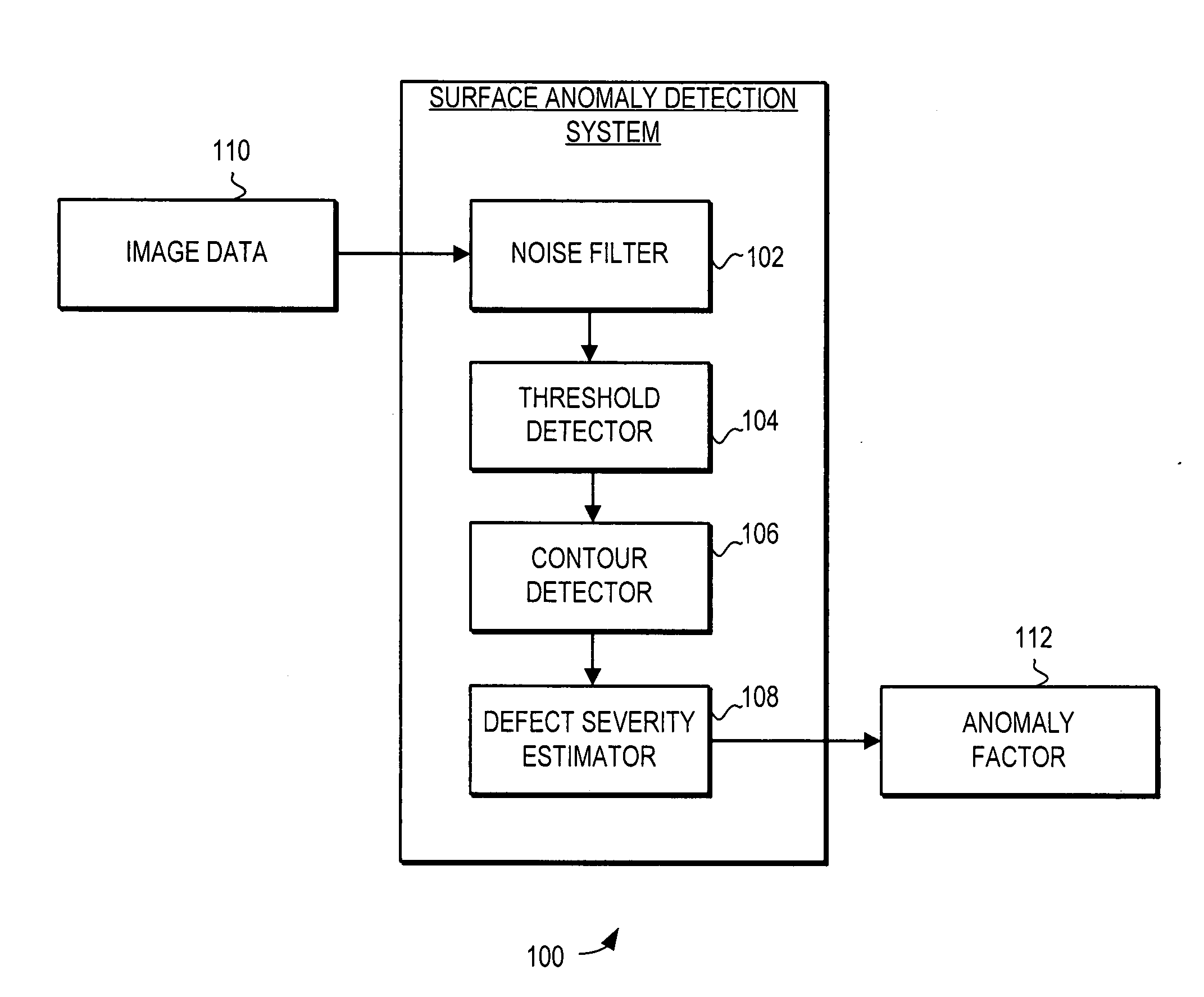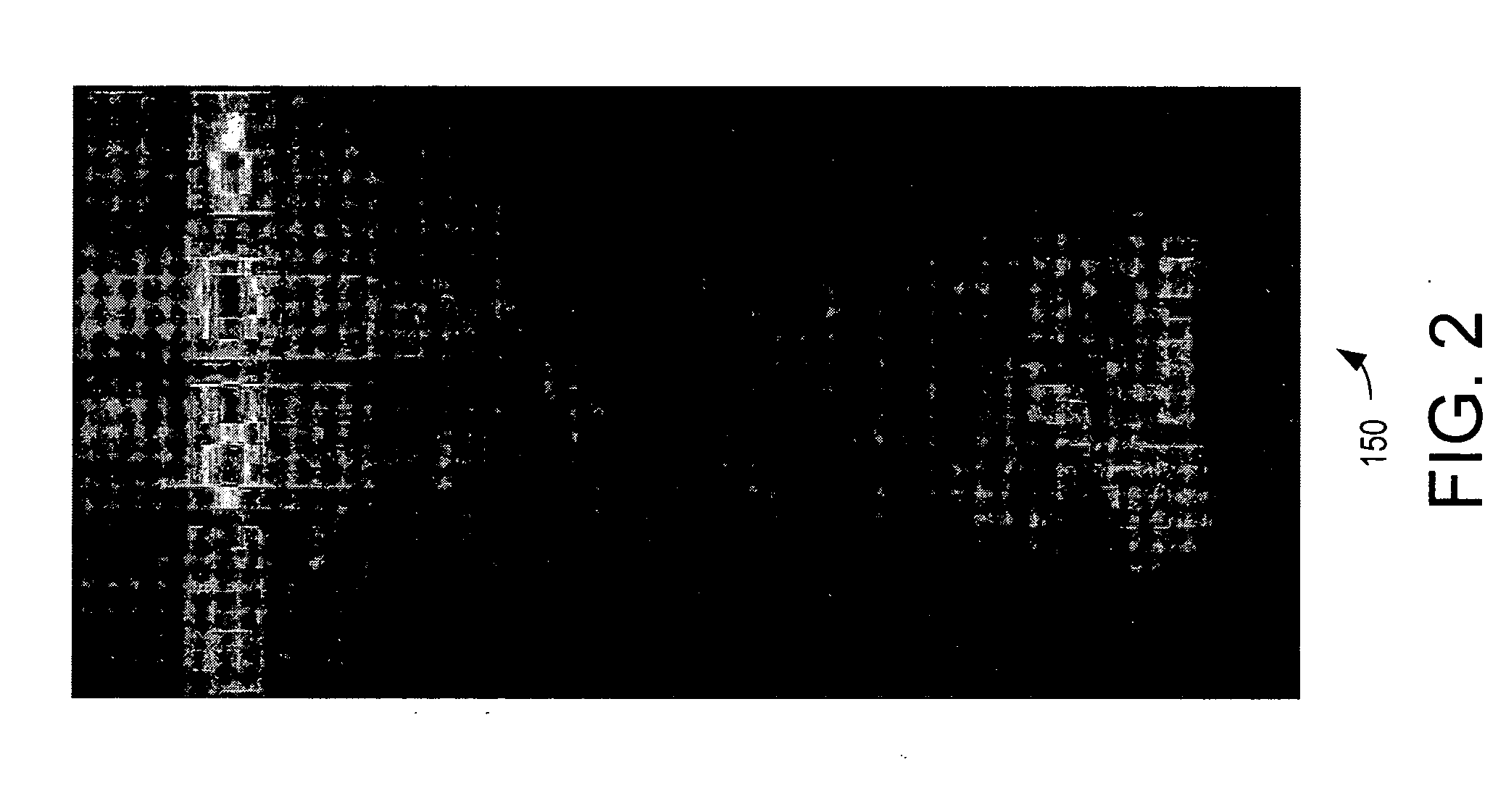Surface anomaly detection system and method
- Summary
- Abstract
- Description
- Claims
- Application Information
AI Technical Summary
Benefits of technology
Problems solved by technology
Method used
Image
Examples
second embodiment
[0040] In a second embodiment, the threshold detector uses a constant false positive probability technique. In this example, experimentation using samples, commonly referred to as coupons, is used determine the distribution of the mean intensity xi,j. In this example, the mean intensity values from all pixel locations in group of images are aggregated, and a distribution of the residual value is generated. This distribution is then used to determine the threshold values for anomaly detection. For example, an anomaly is detected when the residual ri,j exceeds some pre-defined multiple of the distribution standard deviation. In this embodiment, the threshold δ is set based on the area under the residual ri,j distribution. In other words, the threshold is determined to meet a pre-defined false positive criterion. Stated another way, δ=b·s, where s is the standard deviation of the residual distribution and is determined by collating xi,j from all pixel locations collected from multiple ...
third embodiment
[0041] In a third embodiment, the threshold detector uses a constant false positive rate technique to determine the threshold value. In general, a false positive rate is defined as the number of false positives per successful detection of an anomaly. To achieve a desired false positive rate, calibration is performed using samples with varying degrees of anomalies. The calibration samples are analyzed to determine a value for the threshold that achieves the desired rate.
[0042] In this embodiment, the xi,j values from all pixel locations are collected from multiple images that exhibit confirmed structural defect. Other xi,j values from are collected from multiple images of clean samples. The two sets of mean intensity values xi,j, one corresponding to pixels that do not have any defect, and the other set corresponding to pixel locations that have a confirmed defect, are used to generate two residual distributions that can the be used to determine a threshold value using a constant fal...
PUM
 Login to View More
Login to View More Abstract
Description
Claims
Application Information
 Login to View More
Login to View More - R&D
- Intellectual Property
- Life Sciences
- Materials
- Tech Scout
- Unparalleled Data Quality
- Higher Quality Content
- 60% Fewer Hallucinations
Browse by: Latest US Patents, China's latest patents, Technical Efficacy Thesaurus, Application Domain, Technology Topic, Popular Technical Reports.
© 2025 PatSnap. All rights reserved.Legal|Privacy policy|Modern Slavery Act Transparency Statement|Sitemap|About US| Contact US: help@patsnap.com



